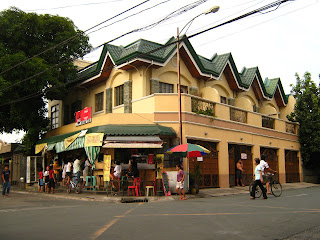
photos and text by IVY A. GARCIA
University of Santo Tomas Journalism program
SAN MATEO, RIZAL—VENDORS operating in a public market at Brgy. Gitnang Bayan II here said the relocation of this municipality’s decades-old public market to an area near the Marikina River poses many environmental hazards.
The San Mateo Public Market will be refurbished for the building of a planned Pamantasan ng Bayan ng San Mateo and the marketplace will be transferred to Kambal Road that’s not near to both the San Mateo Dumpsite (a waste transfer station) and to a slaughterhouse, but also near the San Mateo River.
Speaking on behalf of the market’s vendors, Atty. Gioan Legazpi said market vendors plan to file a water pollution control and abatement case against the San Mateo local government before the Pollution Adjudication Board of the Department of Environment and Natural Resources (DENR) and the Laguna Lake Development Authority (LLDA).
The opposition stems largely from the environmental hazards and alleged violations of some existing laws that the relocated public market’s new location will pose.
Legaspi said it is okay to relocate the public market to a place that is not a hazard-prone area like the planned one in Kambal Road.
Legaspi approximates that the new site for the public market is less than 10 meters from the river bank.
Legaspi cites Presidential Decree 1067, or the Water Code of the Philippines, where article 51 provides that “the banks of rivers and streams, and the shores of the seas and lakes throughout their entire length and within a zone… of 20 meters in agricultural areas and 40 meters in forest areas… to the easement of public use (for) recreation, navigation, floatage, fishing and salvage.”
“No person shall be allowed to stay in this zone longer than what is necessary for recreation, navigation, floatage, fishing, or salvage or to build structures of any kind,” article 51 of PD 1067 provides.
Legaspi also said local officials of San Mateo failed to secure an environmental compliance certificate (ECC) from DENR for the new site of the public market. As well, the planned site of the public market also lacked an environmental impact statement system, this being required by Presidential Decree 1586.
Since the new site is also near the Laguna Lake, Legaspi said constructing the market in the planned site has no “discharge permit” from LLDA.
According to Republic Act 4850 that created the LLDA, a discharge permit is the authorization LLDA gives to any industry or establishment that discharges any liquid wastes or regulated effluents to the Laguna Lake.
The proposed site of the new public market is, Legaspi claims, even near the San Mateo Waste Transfer Station. Thus, Legaspi says the site violates section 15 of the Ecological Solid Waste Management Act, or RA 9003, which provides that no establishment shall be set up within 200 meters from open or controlled dumps, or from sanitary landfills.
School for a market
The existing site of San Mateo’s public market was once a patch of land since the early 1950s, and vendors covered their stalls with umbrellas or cloth. In 1992, during the time of former San Mateo Mayor Amo Santos, this patch of land was cemented and a two-storey building was constructed.
“Maria,” who has been a vendor at the market for 44 years, said the facility “is still a public market”.
But the construction of the second storey was left unfinished and unused until the administration of then Mayor Jose “Peping” Diaz finished construction and made the second floor a local college.
This school, called the Pamantasan ng San Mateo, is sometimes called “U.P.” for “upper palengke [market]”.
Maria said the planned location for the public market is rarely visited because the area’s foul smell comes from the San Mateo landfill, and “it floods there easily” since the San Mateo River is just a “few meters” behind.
But current San Mateo Mayor Jose Rafael “Paeng” Diaz, son of the older Diaz, said protestors are people “who hate discomfort and who don’t want to be relocated” since they have been used to being in the old place.
As for the waste transfer station in Kambal Road, Diaz said it will be moved to a sanitary landfill in Brgy. Pintong Bukauwe, which has been operating since 1990.
Diaz added the site of the new San Mateo public market will have a site development plan, a larger parking area, and a “more organized” drainage system.
As well, Diaz said the new market will also have a sewage treatment plan to cover the waste water coming from the planned market’s wet section.
This is unlike the current market, Diaz claims, where the waste water system goes straight to San Mateo’s drainage system.
“So it will be cleaner [in the wet section of new public market’s site]. Nobody will fall even when the area’s slippery; no rats and cockroaches will roam around. There will also be a more orderly electrical system compared to the existing market’s electrical system that looks like a spaghetti,” Diaz said.
The Pamantasan ng Bayan ng San Mateo has been a plan of former Mayor Jose “Peping” Diaz.
In the current Pamantasan that has 600 enrollees, tuition fees per semester cost only P4,000. Before, the tuition is only P2,000 per semester.
Mayor Diaz also said that current place of the old market is an ideal site for the Pamantasan ng Bayan ng San Mateo, because it is at the center of the town,
The relocation of the market in Gitnang Bayan II may also ease traffic on the main road, the younger Diaz said. (912 words)









